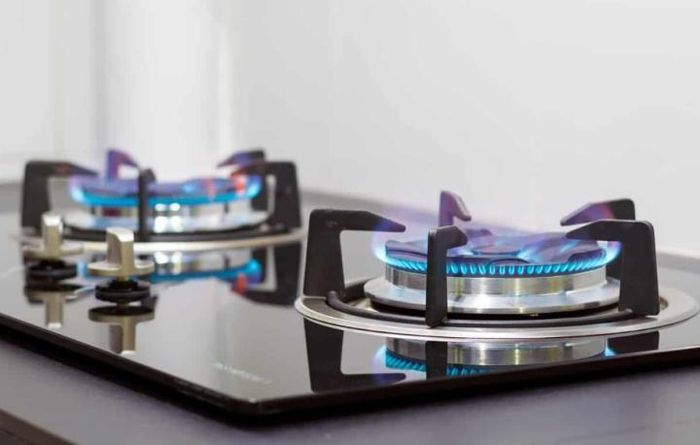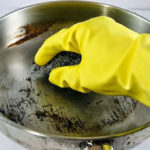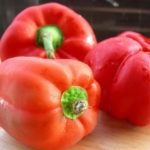Finding ways to save on gas while still ensuring quality meals for your family is a challenge for many homemakers today.
Here are some handy tips to help you save gas efficiently.
Choose the right type of gas stove
Depending on the number of people and cooking needs of each household, you can choose a gas stove that is suitable in terms of space, price, and cost-effectiveness. When choosing a gas stove, consider the following:
Choose a stove with a size (power) that meets your needs.
Choose a stove with different cooking zones and easily adjustable flame intensity, preferably one with a simmer burner.
Choose a stove with detachable burners and flame dividers for easy cleaning.
Choose a stove with grates that are compatible with your cookware.
Choose a stove with a safety valve that automatically shuts off the gas after the stove is turned off.
Choose a stove with a timer function, if possible, to control cooking time, prevent waste, and ensure safety in case the user forgets to monitor.
Note: When installing, ensure tight connections to prevent gas leakage and ensure safety.

Choose the right type of gas stove to save on cooking
Tips to save gas while using the gas stove
The following tips will help you save a significant amount of gas. By implementing these tips regularly, you can reduce expenses for your family.
Choose appropriate cooking utensils
Choose pots and pans that are the right size for the amount of food you are cooking. Avoid cooking a small amount of food in a large pot, as this will waste gas. If you need to simmer or stew, using a pressure cooker can help cook the food quickly and save gas.
In addition, using appropriate pots and pans can save a considerable amount of gas. Thick pots often require more time to heat up. Aluminum and thin-bottomed stainless steel pots are good options as they absorb heat quickly and save gas during cooking.
Avoid turning the stove on and off multiple times
Before cooking, prepare all the ingredients, such as washing vegetables, rinsing rice, or cutting meat, before turning on the stove. By doing this, you can cook continuously without wasting gas. Turning the stove on and off multiple times will result in more gas escaping. In addition, frequently turning the stove off and on can reduce its lifespan.
Adjust the flame to the right intensity
Using a larger flame does not necessarily mean the food will cook faster. It is best to adjust the flame to concentrate the heat at the bottom of the pot.
While cooking, simply adjust the gas knob to the appropriate flame size, avoiding a wide flame that spreads outside the pot. A flame that is too large will waste gas and cause the food to take longer to cook, as the heat is dispersed instead of concentrated at the bottom of the pot.

Useful tips to save gas while cooking
Utilize available hot water
Estimate the appropriate amount of water needed for cooking from the beginning. Avoid adding cold water, as it changes the taste of the food and wastes time waiting for the water to boil. Instead, utilize readily available hot water such as solar energy or boiling water. This helps save gas and reduces waiting time.
In addition, using hot water can decrease cooking time and save gas. For example, cover the pot while boiling water to speed up the process.
Thaw frozen food before cooking
Thawing food before cooking helps save a significant amount of gas. If you directly cook the food taken from the freezer, it will waste gas to melt the ice. Therefore, it is advisable to thaw the food in a microwave before cooking.
You can also apply soaking, marinating, or cutting the ingredients before cooking to speed up the cooking process and save gas.
Use a windscreen for the gas stove
A windscreen, also known as a gas-saving grate, is a metal accessory that is placed around the burner. It is widely available in markets and supermarkets. The windscreen helps prevent heat loss while cooking and directs the heat straight to the bottom of the pot. By using a windscreen, you can save a significant amount of energy.
Stay focused while cooking
Some homemakers have a habit of multitasking while cooking, which often leads to forgetting or neglecting the cooking process. This can result in overcooked food, water boiling away, or even burning the bottom of the pot. This not only wastes gas but also affects the nutritional value of the food.
Secure the gas cylinder after cooking
After cooking, make sure to securely close the gas cylinder to prevent gas leaks, potential fire hazards, and unnecessary gas wastage.
Regularly clean the gas stove
Every day after cooking, clean the gas stove to prevent dirt from clogging the gas paths. Regular cleaning ensures stable gas flow, even flame distribution, and saves gas during cooking.
Source: VTC
Exploring Possible Reasons and Solutions for Difficulty Lighting a Camping Stove
If you’re having difficulty getting your mini gas stove to ignite, we’ve come up with some tips to help you get it back in business in no time. Read on to find out what you can do to get your tourist gas stove running again.






































